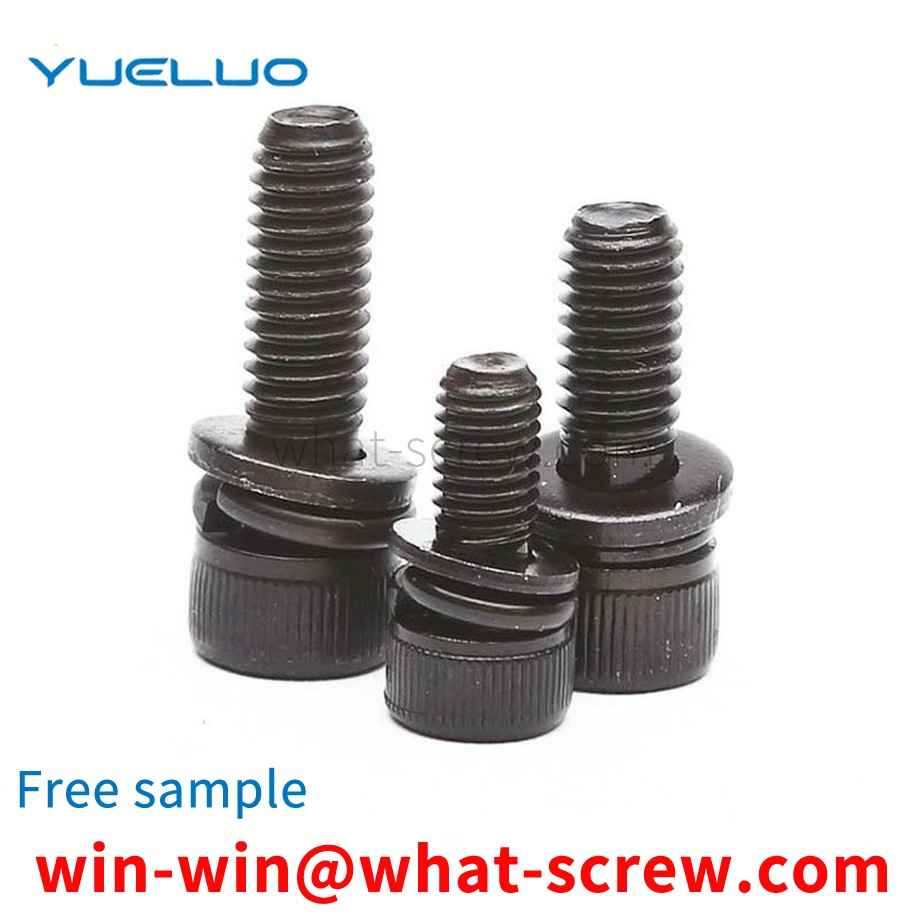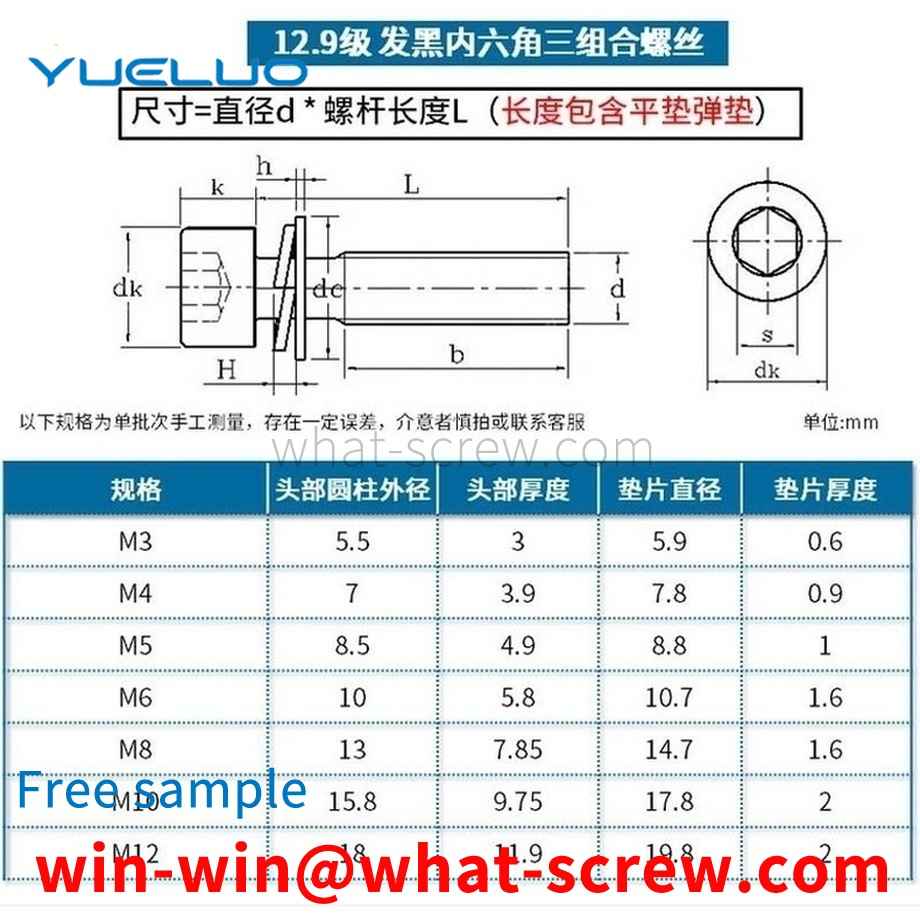The quick-install and quick-release nut uses the threaded block to move radially and axially along the inclined surface at the same time to achieve the cohesion and separation of the threaded block. However, the nut has a complex structure and is difficult to manufacture, and the internal and external threads may not be properly locked during use. Occurs, bearing capacity and reliability are poor.
Stainless steel screws are classified into austenitic stainless steel, ferritic stainless steel, martensitic stainless steel, and precipitation hardening stainless steel. The selection of stainless steel screws is also based on principles. Where to start, let you choose the stainless steel screws you need. After comprehensive and comprehensive consideration of these five aspects, the grades, varieties, specifications and material standards of stainless steel screws are finally determined. Austenitic stainless steel: the most basic alloying elements of austenitic stainless steel are chromium and nickel. The grade is a chromium-nickel austenitic stainless steel with a chromium content of about 18% and a nickel content of about 8%, often called 18-8 stainless steel. The element ratio of chromium and nickel basically ensures that the structure of the steel is stable austenitic ferritic stainless steel: 430 type ordinary chromium steel, its corrosion resistance and heat resistance are better than 410 type, magnetic, but it It cannot be strengthened by heat treatment, and is suitable for stainless steel screws with slightly higher corrosion resistance and heat resistance and general strength requirements. Martensitic stainless steel: Type 410 and 416 can be strengthened by heat treatment, with a hardness of 35 to 45HRC, and good machinability. They are used for general-purpose heat-resistant and corrosion-resistant stainless steel screws. Type 416 has a slightly higher sulfur content and is a free-cutting stainless steel. Type 420, sulfur content? R0.15%, improved mechanical properties, can be strengthened by heat treatment, maximum hardness value of 53 ~ 58HRC, used for stainless steel screws requiring higher strength. Precipitation hardening stainless steel: 17-4PH, PH15-7Mo, they can get higher strength than the usual 18-8 type stainless steel, so they are used for high-strength, corrosion-resistant stainless steel stainless steel screws. A-286, a non-standard stainless steel, has higher corrosion resistance than commonly used Type 18-8 stainless steels, as well as good mechanical properties at elevated temperatures. Used as high-strength, heat-resistant, corrosion-resistant stainless steel screws, can be used to 650 ~ 700 ℃. Austenitic stainless steel: The commonly used models are 302, 303, 304, and 305, which are the so-called 18-8 austenitic stainless steels. Both corrosion resistance and mechanical properties are similar. The starting point of selection is the production process method of stainless steel screws, and the method depends on the size and shape of stainless steel screws, and also depends on the quantity of production. Type 302 is used for machined screws and self-tapping bolts. Type 303 In order to improve machinability, Type 303 stainless steel is added with a small amount of sulfur and is used to machine nuts from bar stock. Type 304 is suitable for hot heading stainless steel screws, such as longer gauge bolts, large diameter bolts, which may be beyond the scope of the cold heading process. Type 305 is suitable for cold heading processing of stainless steel screws, such as cold formed nuts, hex bolts. Type 309 and Type 310, their Cr content and Ni content are higher than 18-8 type stainless steel, suitable for stainless steel screws working at high temperature. Types 316 and 317, both of which contain the alloying element Mo, have higher high temperature strength and corrosion resistance than 18-8 type stainless steel. Type 321 and Type 347, Type 321 contains a relatively stable alloying element Ti, Type 347 contains Nb, which improves the intergranular corrosion resistance of the material. It is suitable for stainless steel standard parts that are not annealed after welding or serve at 420~1013℃.
The product structure in the known technology includes a T-shaped bolt with a longitudinal section, and a polygonal nut matched with the bolt. The bolt is divided into two parts: the screw and the screw head. The screw head is placed at one end of the screw to form an integral part. The radial length of the tightening surface of the screw head is greater than the radial length of the screw, and its axial length is less than the axial length of the screw; The solid surface is a polygon, and now a hexagon is commonly used. The periphery of the base of the nut and the screw head has a number of elastic surfaces corresponding to the polygon; the periphery of the axial screw is provided with an external thread matching the internal thread of the nut. In actual use, the fastener of this structure can be tightened by using a conventional screw, such as a wrench. Therefore, its anti-theft performance is poor and it is not suitable for occasions with special requirements.
In the prior art, there are also automated equipment for riveting and assembling of hardware and handles; however, for the existing automated equipment, how to automatically and efficiently realize rivet feeding is particularly important.
Nuts are a commonly used fastening parts and are widely used in various mechanical and electrical equipment. Common application equipment does not have particularly strict requirements on the anti-loosening properties of nuts, but for automobiles, high-speed railways, aerospace and nuclear power and other fields, many equipment or components work in a vibration environment for a long time, and it is easy to loose between bolts and nuts. This will affect the normal operation of the equipment and even cause safety accidents.
We have many years of experience in the production and sales of screws, nuts, flat washers, etc. The main products are: thickened flat washers, oil plug bolts, national standard aluminum shrapnel nuts, extended tension bolts and other products, we can provide you with suitable tightening bolts. Firmware Solutions.



















 Service Hotline
Service Hotline




